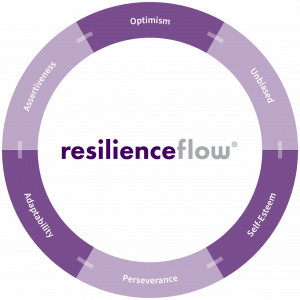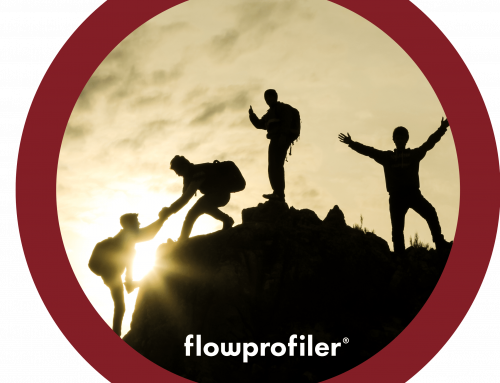Resilience has become a buzzword in the workplace, with many organisations striving to create a resilient workforce to navigate the ever-changing business landscape. The concept of workplace resilience has a rich history that dates back several decades. In this blog, we will explore the history of workplace resilience and its evolution over time.
 The concept of resilience can be traced back to the work of psychologist Emmy Werner in the 1970s. Werner conducted a longitudinal study on children in Hawaii who were exposed to adverse childhood experiences such as poverty, parental neglect, and abuse. She found that despite their difficult circumstances, some children were able to adapt and thrive, while others struggled with mental health issues and other challenges. Werner coined the term “resilience” to describe the ability of some children to overcome adversity and succeed in life.
The concept of resilience can be traced back to the work of psychologist Emmy Werner in the 1970s. Werner conducted a longitudinal study on children in Hawaii who were exposed to adverse childhood experiences such as poverty, parental neglect, and abuse. She found that despite their difficult circumstances, some children were able to adapt and thrive, while others struggled with mental health issues and other challenges. Werner coined the term “resilience” to describe the ability of some children to overcome adversity and succeed in life.
In the 1990s, the concept of resilience gained popularity in the workplace, as organisations began to recognise the importance of helping employees cope with the stresses of the job. One of the first researchers to study resilience in the workplace was Salvatore Maddi, a clinical psychologist who developed a program called “hardiness training.” The program focused on developing resilience in employees by teaching them coping skills and providing social support.
Since then, the concept of resilience has continued to evolve in the workplace. In recent years, there has been a growing emphasis on the importance of resilience in leadership, with many organisations recognising the need for leaders who can adapt to change and lead their teams through difficult times.
There has also been a greater focus on the role of workplace culture in fostering resilience, with organisations striving to create a supportive and inclusive environment that promotes mental health and well-being.
Overall, the history of workplace resilience is a testament to the importance of adapting to change and overcoming challenges. By developing resilience in the workplace, organisations can create a workforce that is better equipped to navigate the uncertainties of the future.
Workplace resilience
Workplace resilience is the ability to adapt to change, cope with challenges, and bounce back from setbacks. Let’s explore the benefits of workplace resilience and how it can help organisations thrive.
- Improved Mental Health
Workplace resilience can help improve the mental health and well-being of employees. Studies have shown that individuals with higher levels of resilience are less likely to experience depression, anxiety, and other mental health issues (Folkman & Moskowitz, 2004). By cultivating resilience in the workplace, organisations can help reduce stress levels and create a more supportive work environment.
- Increased Productivity
Resilient employees are better equipped to handle challenges and setbacks, which can help increase productivity in the workplace. When employees have the ability to adapt to change and overcome obstacles, they are more likely to stay focused and motivated, even when facing difficult situations.
- Enhanced Problem-Solving Skills
Resilient employees have a greater ability to problem-solve and find creative solutions to challenges. By cultivating resilience in the workplace, organisations can encourage employees to think outside the box and develop innovative approaches to problem-solving.
- Improved Teamwork
Resilient employees are better equipped to work effectively in a team setting. They are more likely to communicate effectively, collaborate with others, and contribute positively to group dynamics. By cultivating resilience in the workplace, organisations can create a more cohesive and productive team environment.
- Greater Adaptability to Change
The ability to adapt to change is a key component of workplace resilience. Resilient employees are better equipped to handle unexpected changes and disruptions, whether it be a sudden shift in priorities or a major organisational restructuring. By cultivating workplace resilience, organisations can create a workforce that is better prepared to navigate uncertainty and thrive in a rapidly changing business environment.
Workplace resilience offers numerous benefits for both employees and organisations. By fostering a culture of resilience, organisations can create a more supportive and productive work environment that helps employees thrive.
Resilience and leadership
Leadership is a challenging and complex role that requires individuals to navigate a wide range of interpersonal, organisational, and environmental challenges. Resilience is an essential quality for effective leadership, as it enables leaders to adapt to change, overcome obstacles, and emerge stronger from difficult experiences. What can leaders expect from developing their resilience? There are numerous benefits!
- Adaptability
One of the key benefits of resilience in leadership is the ability to adapt to changing circumstances. Resilient leaders are able to respond to challenges and setbacks with flexibility and creativity, finding new ways to overcome obstacles and achieve their goals. This adaptability is essential in today’s rapidly changing business environment, where leaders must be able to pivot quickly and make strategic decisions in the face of uncertainty.
- Emotional Intelligence
Resilience also plays a critical role in emotional intelligence, which is essential for effective leadership. Resilient leaders are better able to manage their emotions and respond to the emotions of others with empathy and understanding. They are able to communicate effectively, build strong relationships, and create a positive and supportive work environment.
- Decision Making
Leadership requires making tough decisions, often in the face of incomplete or conflicting information. Resilience enables leaders to make sound decisions under pressure, weighing the risks and benefits of different options and remaining focused on their goals. Resilient leaders are able to think strategically, anticipate potential challenges, and develop contingency plans to mitigate risk.
- Role Model
Leadership is also about setting an example and inspiring others to follow. Resilient leaders demonstrate the importance of perseverance, determination, and hard work, even in the face of adversity. By modelling these qualities, they inspire their teams to remain committed to their goals and persevere through difficult times.
Resilience is an essential quality for effective leadership. Resilient leaders are able to adapt to change, manage their emotions, make tough decisions, and inspire others to follow. By cultivating resilience, leaders can build strong and effective teams, navigate challenges and setbacks, and achieve long-term success.

resilienceflow®
resilienceflow® is a psychometric assessment that combines resilience and flow, two key psychological states that can help individuals and organisations to thrive.
Resilience refers to the ability to bounce back from setbacks and adapt to change, while flow refers to a state of optimal performance and engagement where individuals are fully immersed in their work.
What benefits does resilienceflow® bring to organisations?
- Increased Productivity and Performance
One of the key benefits of resilienceflow® for organisations is increased productivity and performance. When individuals are able to achieve a state of flow, they are fully immersed in their work and able to perform at their highest level. By building resilience skills, individuals are better able to cope with stress and overcome setbacks, allowing them to maintain their focus and achieve their goals.
- Improved Wellbeing
resilienceflow® can also lead to improved wellbeing for individuals and organisations. By creating a work environment that supports flow, individuals are able to find meaning and purpose in their work, leading to greater job satisfaction and overall wellbeing. Building resilience skills can also help individuals to manage stress and maintain their mental and physical health, reducing the risk of burnout and other negative health outcomes.
- Enhanced Creativity and Innovation
resilienceflow® can also enhance creativity and innovation within organisations. When individuals are able to achieve a state of flow, they are more likely to come up with creative solutions to problems and generate new ideas. Building resilience skills can also help individuals to overcome fear of failure and take risks, leading to greater creativity and innovation.
- Improved Teamwork and Collaboration
Finally, resilienceflow® can also improve teamwork and collaboration within organisations. By creating a work environment that supports flow, individuals are able to work together more effectively and achieve common goals. Building resilience skills can also help individuals to communicate effectively and manage conflicts, leading to improved teamwork and collaboration.
resilienceflow® is a powerful concept that combines resilience and flow to help individuals and organisations to achieve optimal performance and wellbeing. By building resilience skills and creating a work environment that supports flow, organisations can increase productivity and performance, improve well-being, enhance creativity and innovation, and improve teamwork and collaboration.
Workplace resilience is a superpower well worth cultivating and developing in your people.
Would you like to know more? Reach out to us at hello@flowprofiler.com
References:
Csikszentmihalyi, M. (1990). Flow: The psychology of optimal experience. Harper & Row.
Folkman, S., & Moskowitz, J. T. (2004). Coping: Pitfalls and promise. Annual Review of Psychology, 55(1), 745-774.
Luthans, F., Avolio, B. J., Avey, J. B., & Norman, S. M. (2007). Positive psychological capital: Measurement and relationship with performance and satisfaction. Personnel Psychology, 60(3), 541-572.
Luthans, F., Vogelgesang, G. R., & Lester, P. B. (2006). Developing the psychological capital of resiliency. Human Resource Development Review, 5(1), 25-44.
Luthans, F., & Youssef, C. M. (2007). Emerging positive organizational behavior. Journal of Management, 33(3), 321-349.
Luthans, F., & Youssef-Morgan, C. M. (2017). Psychological capital: An evidence-based positive approach. Annual Review of Organizational Psychology and Organizational Behavior, 4, 339-366.
Richardson, G. E. (2002). The metatheory of resilience and resiliency. Journal of Clinical Psychology, 58(3), 307-321.
Maddi, S. R. (2002). The story of hardiness: Twenty years of theorizing, research, and practice. Consulting Psychology Journal: Practice and Research, 54(3), 173-185.
Northouse, P. G. (2019). Leadership: Theory and practice. Sage Publications.
Salanova, M., Bakker, A. B., & Llorens, S. (2006). Flow at work: Evidence for an upward spiral of personal and organizational resources. Journal of Happiness Studies, 7(1), 1-22.
Sutcliffe, K. M., Vogus, T. J., & Dane, E. (2016). Mindfulness in organizations: A cross-level review. Annual Review of Organizational Psychology and Organizational Behavior, 3, 55-81.
Werner, E. E., & Smith, R. S. (1992). Overcoming the Odds: High Risk Children from Birth to Adulthood. Cornell University Press.





Leave A Comment